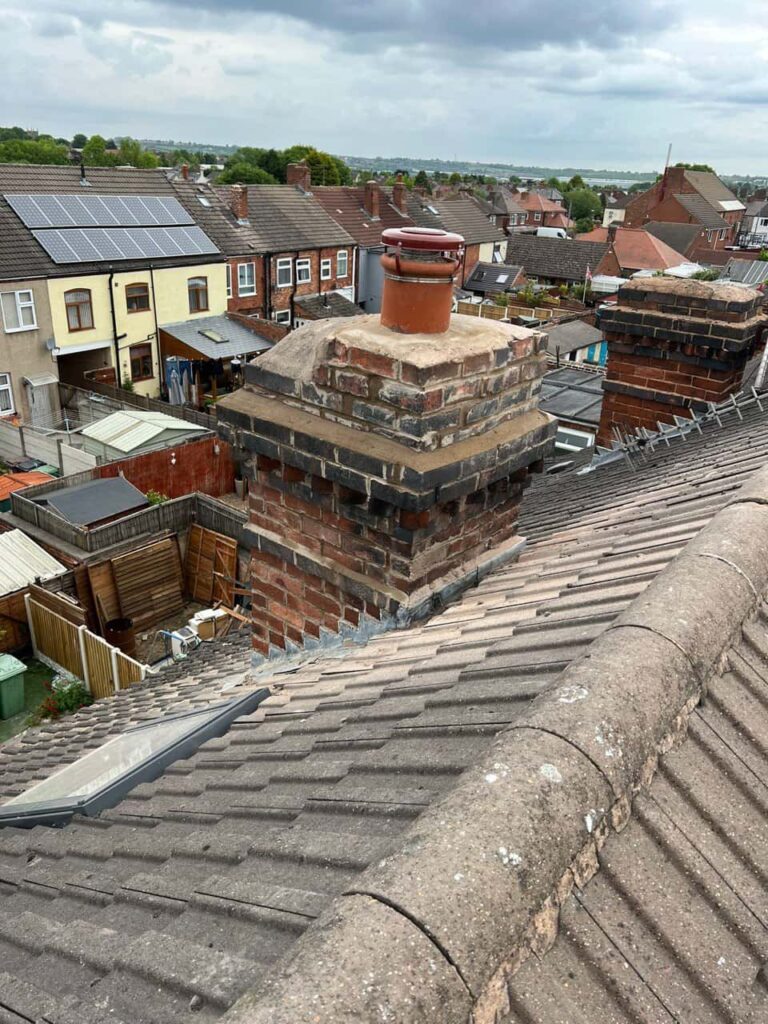Introduction
Few things are more frustrating for a homeowner than a chimney that keeps leaking—especially after you’ve already had it repaired. You patch it up, breathe a sigh of relief, only to find damp patches creeping back or mysterious drips reappearing. So, what’s going wrong?
At Wednesfield Roofing Repairs, we regularly speak to property owners around the West Midlands who’ve spent time and money trying to fix chimney leaks with little success. The truth is, chimney leaks are often more complex than they appear, and surface-level fixes don’t always tackle the real problem.
Let’s dive into the hidden causes behind persistent chimney leaks and what can be done to resolve them for good.
Common Reasons Chimneys Continue to Leak After Repairs
1. Poor-Quality or Incomplete Repairs
Sometimes, the issue isn’t that the chimney can’t be fixed—it’s that it wasn’t fixed properly in the first place. Quick patch jobs, mismatched materials, or failing to address the root cause will only provide temporary relief.
2. Faulty Flashing
Lead flashing is meant to form a watertight seal between the chimney and the roof. If it’s been installed incorrectly, or if it’s started to degrade over time, water can easily seep in—even if the rest of the chimney looks solid.
3. Damaged or Missing Chimney Cowl
The chimney cowl prevents rain from entering the flue. If it’s cracked, rusted, or not fitted at all, rain can pour straight down, especially during heavy weather. This is often mistaken for a roof or flashing issue.
4. Cracks in the Chimney Stack or Mortar Joints
Brickwork and mortar are porous and susceptible to wear. Small cracks in the render, bricks or pointing might not have been sealed during the initial repair, allowing water to seep through and cause internal damp.
5. Water Penetration from the Crown
The top of the chimney, known as the crown, is exposed to the worst of the weather. If it’s cracked or poorly sealed, water can get into the structure and travel downward inside the chimney.
6. Condensation Misdiagnosed as a Leak
In some cases, it’s not actually rain causing the issue. A poorly vented or unused chimney can trap moisture, leading to internal condensation that mimics a leak. If repairs have only focused on the exterior, this issue will persist.
Signs That the Leak Wasn’t Fully Resolved
- Reappearance of internal water stains
- Musty smells near the fireplace
- Damp patches near ceilings or in lofts
- White staining (efflorescence) on chimney bricks
- Pooled water or drips inside the hearth
What You Can Do About It
Fixing a leaky chimney for good means identifying all potential entry points and addressing them comprehensively. Here are a few tips to ensure long-term results:
- Have the entire chimney surveyed, not just the site of visible damage.
- Upgrade or reseal the flashing using long-lasting materials.
- Repoint the brickwork and apply a water-repellent sealant to exposed surfaces.
- Install or replace a chimney cowl to prevent vertical water ingress.
- Inspect the chimney crown for cracking and consider a concrete or sealant cap.
Conclusion
If your chimney continues to leak despite previous repairs, you’re not alone. These structures are exposed to all the elements and contain multiple weak points. Addressing one issue in isolation often won’t be enough.
At Wednesfield Roofing Repairs, we specialise in diagnosing and solving persistent chimney leaks with a comprehensive, whole-system approach. Don’t settle for short-term fixes—reach out today for an expert inspection and protect your home from long-term water damage.
Call us on: 01902 953 590
Click here to find out more about Wednesfield Roofing Repairs
Click here to complete our contact form and see how we can help with your roofing needs.

